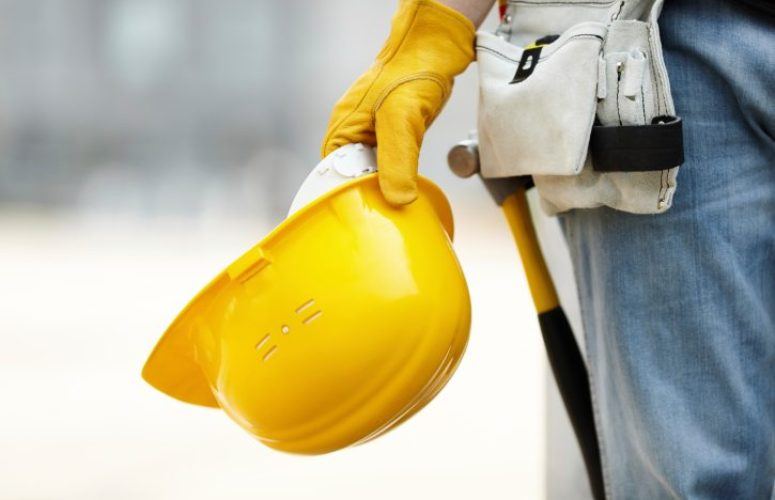
The Key to Commercial Development: ‘Work as Partners, Not Adversaries’
Getting the job done means better collaboration.
By Eric C. Peterson, Contributing Writer On May 9, 2016New Jersey’s municipalities have an array of zoning, permitting, building and other codes for developers and contractors to navigate in order to get projects done, and that process has often proved tedious. Add third-party influence of state and county agencies, and the process has become more complicated. Indeed, it has often been a deal-killer.
The good news is more communities are working to collaborate with developers – without easing their requirements, of course. Moreover, state agencies are being credited with improved facilitation.
What’s driving the need to get projects done and how can the public and private sectors further work together?
From a real estate perspective, “we in the development community need to work closely with local leaders to make sure they’re aware of current market trends,” says Clark Machemer, senior vice president of the Rockefeller Development Group, Morristown. “The key is understanding a town’s goals, then allowing developers to come in and articulate how the visions they have for a particular site fit within those goals.”
A driving factor is the “cultural shift going on right now in how we live, work and entertain,” Machemer says. “That’s having a dramatic impact on real estate and how people use real estate.”
“Every town is different, but each has its own personality in terms of its administration,” says Jerry Barta, vice president, director of leasing and marketing for Alfred Sanzari Enterprises, Hackensack. “Some are more accommodating, some less accommodating, but many now realize they can’t simply fold their arms across their chests and say ‘no.’ Towns need ratables.
“That’s not to say a town says ‘do whatever you want,’ but towns do need to look to responsible development,” he says.
While there has been improvement, the last recession might have had something to do with it. “Prior to 2008, most towns had ‘Neanderthal’ processes,” says Michael Walsh, president of Corporate Contracting, Parsippany. The downturn resulted in some staffing cuts of the “bad apples,” but long-term, “with all the purging and cleansing of departments, they got much better.”
While many communities have become more accommodating, “there’s still a barrier to entry here,” says Ross Chomik, managing partner of Vision Real Estate Partners, Mountain Lakes. In many places, “there’s still politics and bureaucracy getting through the approval process. New Jersey has historically been tougher than surrounding states,” he says, but concedes that in recent years, “it definitely has improved.”
And even with the “cleansing” process, some of the staffers still in place are overworked, according to Walsh. “An inspection that used to take two or three days can now take a week or two,” he says.
“Any project is an uphill battle,” says Patrick Delle Cava, business manager and principal officer of the International Brotherhood of Electrical Workers (IBEW) Local 102, Parsippany. “Any construction will be opposed by environmentalists, for example,” but he notes that the New Jersey DEP, once an impediment, “is now more of an ally.”
Meetings are key to the process, and the earlier the better. As a builder, Tom Webb, executive vice president and general manager of Skanska USA Building, partners with clients, the developer or end-user, and “gets involved early-on with the municipality. It’s important to get set up early … it’s all about planning,” Webb says, whose projects have included Merck in Rahway and MetLife Stadium.
“Whether public or private, the earlier the better in terms of communication between the applicant and the community,” agrees Michael Cerra, assistant executive director of the New Jersey League of Municipalities. That could even be a pre-submission phase, an “informal conversation,” particularly for larger projects.
“It’s best to identify potential problems in advance rather than after you’ve gone out of pocket,” he says.
Walsh agrees: “Our standard operating procedure is to have pre-review meetings, so prints and plans are fully articulated.” His advice: “Actually sit down with some of the sub-code offices, tell them what you’re going to be doing, and get their input.”
What are some of the difficulties that persist?
With some municipalities, it’s size and resources – smaller staffs to work with, for example, according to Webb.
For Delle Cava, one issue is that some towns have a “candy list. It can be very political, and it’s frustrating for those of us who want to put construction workers to work.”
He does concede that state government “has gotten better at getting out of the way, and some towns are fantastic at making projects happen.” Delle Cava suggests getting town governments “out of the way with a standard set of rules.” He cites such example, as Delaware and New York’s Lower Hudson Valley, where regional zoning and masterplanning has accomplished that.
Municipalities are “taking steps to be proactive,” Cerra says, noting Jersey City, Elizabeth, New Brunswick and Collingswood. In particular, “Woodbridge comes to mind – their economic development team is committed to moving the administration of these processes.”
“We function as a team,” says Marta Lefsky, Woodbridge’s director of planning and development. “It starts at the top with the leadership of Mayor John McCormac – he will not only take phone calls and respond, but will reach out and try to attract businesses.
“We also assist builders and developers with outside agency approvals, be it county or state,” Lefsky adds. “I speak to the zoning officer, construction official, and board secretary every day on issues or questions, and we’re always troubleshooting. The traditional viewpoint is, ‘you can’t fight city hall,’ and our viewpoint is exactly the opposite. We partner hand-in-hand with applicants to make the process as quick and smooth as possible.”
Other communities mentioned in the same vein include Florham Park, which “has been very receptive,” Rockefeller’s Machemer says. And it works both ways: “We understood the vision of what Florham Park wanted to accomplish with the redevelopment of the Exxon Mobil campus.”
And Walsh notes that Parisppany “has come a long way from where it was.”
“Some towns are exhibiting new openness on a case-by-case basis,” Barta says, citing Teaneck as “one of those towns. They’re looking at projects and rezoning as necessary to the extent that a project makes sense with the masterplan that has to be complied with.”
Another example, according to Barta: Hackensack. “They’re doing it on more of a global basis in terms of downtown redevelopment. Their message is, ‘We want to take downtown and make it a more cohesive unit, and we want people to know we’re open for business and are prepared to help you help us.’”
“It’s a matter of having an open mindset of the local community to get through a process,” Machemer says. “If I were the head of real estate for a Fortune 500 company, or any size company, and the CEO came to me and said, ‘I want to do a build-to-suit,’ that would be scary because there are so many associated risks. The one way to eliminate the biggest risk, the entitlement risk, would be to go only to sites that are entitled.
“New Jersey has some fantastic incentives, but if a company misses the timeframes to move employees in because of the approval process, the cost could potentially far exceed the incentives,” he says. “From a state perspective, we need to make sure that sites companies want to be in are entitled and can be delivered in reasonable timeframes.”
For developers, “it is important to understand the specific municipality; its wants and needs from a development and ratable standpoint,” Chomik says. And for towns, “go against the grain and welcome open, collaborative meetings with developers and third-party consultants.”
One issue that has arisen is that of PILOT programs. “Some people say, ‘You’re giving these developers tax breaks?’” Barta notes. The response is, “It was a vacant lot before. Now it’s going to be developed and benefit the community as a new ratable. The question is, ‘Who’s helping who?’”
“Working as partners and not adversaries, you’re more likely to get a better outcome, and in the long-term, better projects for both the developer, the applicant and the community,” Cerra says.
Related Articles:





